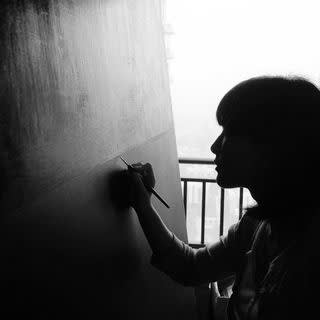Qian Jiahua was born in Shanghai in 1987 and graduated from the China Academy of Art in 2011. He now lives and works in Shanghai. Qian Jiahua emphasizes the linearity and balance of flat compositions and tries to capture the rational perception generated by vivid colors and simple brushstrokes.
The artist's creations emphasize the process of painting as a way of generating images, visualizing the precision of communicative dynamics generated from within the body, extracting the material properties of the medium to rethink the relationship between painting and image, responding to or slowing down the hostage and consumption of perceptions by the huge arithmetic system with a sensitive, slow, and unnameable female perspective, and welling up to break the geo-temporal boundaries of abstraction in painting.
Qian Jiahua employs muscular surfaces and line gestures as trajectories of action, embracing the unexpected episodic nature of the process, with randomness, interaction, and balance interspersed in the layering of the images. Those primitive impulses, perceived by the body, constitute a dramatic question between destruction and bridging, and are finally framed as the representative visual elements of stacking, pulling, and sharp corners in the images, which challenge the era of screen-viewing images while expressing the visualization of musicality.
The artist's creations emphasize the process of painting as a way of generating images, visualizing the precision of communicative dynamics generated from within the body, extracting the material properties of the medium to rethink the relationship between painting and image, responding to or slowing down the hostage and consumption of perceptions by the huge arithmetic system with a sensitive, slow, and unnameable female perspective, and welling up to break the geo-temporal boundaries of abstraction in painting.
Qian Jiahua employs muscular surfaces and line gestures as trajectories of action, embracing the unexpected episodic nature of the process, with randomness, interaction, and balance interspersed in the layering of the images. Those primitive impulses, perceived by the body, constitute a dramatic question between destruction and bridging, and are finally framed as the representative visual elements of stacking, pulling, and sharp corners in the images, which challenge the era of screen-viewing images while expressing the visualization of musicality.

